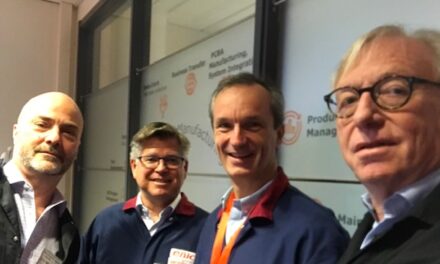What’s the SCOOP – 2022 Trends – Shortages, Shorter Supply Chains and Bigger Companies

At the end of last year I asked the “What’s the SCOOP” community to share their major trends for 2022 and more than 30 executives responded. Their full responses are in three different articles on EMSNOW and will appear elsewhere as well as in an e-book to be published next week. I interviewed some of the execs and those interviews are available in video and podcast form.
So what are the major takeaways from their insight and what is my own take on 2022?
Firstly the elephant in the room, or at least the elephant that you ordered months ago, didn’t get finished in time because of a shortage of tusks and is now languishing in a container a few miles off the port of Los Angeles. Yes, we’re talking about parts and supply chain shortages.
By far the most common prediction was a continuation of the current dilemma with parts and logistics that will last well into 2022 and even into 2023. If you want more recent insight, check out the last episode of The EMS (Eric Miscoll Show) with Season Group’s Carl Hung and TITOMA’s Case Engelen, available on video and podcast. Whilst the show was scheduled to be all about the impending Lunar New Year and the subsequent disruptions, both guests were able to update the audience on an ongoing and in some case worsening problem with component lead times.
The component shortages are really shaping the industry right now and impacting on many other trends. Talent shortages, or The Great Resignation, as some are calling it, are aggravated by the stress in the supply chain. Some people are re-evaluating their work life balance and others are simply moving to other companies where the grass looks greener and the paychecks fatter. Clearly recruiting and retaining talent is going to be increasingly important in the coming months and years. But with talent shortages comes higher wages and potential inflation, which along with the increasing stock and WIP due to shortages, is putting a strain on cash flow for many companies.
Over the last couple of years we’ve seen plenty of heat in the M&A market, much of it chasing scale. The big companies are buying the medium size companies and they are buying the smaller ones. They are all looking to gain more influence in the marketplace, greater credibility with their customers and perhaps a bit more buying power and a stronger balance sheet to help through the crisis. I am certainly expecting more of the same and on a recent MADE IN EUROPE show with guests Dieter Weiss and Eric Miscoll, I rather rashly predicted that there would be at least three European EMS players with sales over $1B by the end of 2022. From what I have seen since that show went out I suspect I might be right for a change!
All these trends and disruption have pushed me to the belief that supply chains need to be shorter and perhaps less complex. Shorter supply chains are really reflective of the desire to make in-region-for-region, the need to reduce dependency on certain geographies and the need to stop chasing low cost labor around the world, always looking for somewhere cheaper than the last place. They also support greater flexibility, greater agility and greater supply chain security. And perhaps most importantly, shorter supply chains may offer a chance to put sustainability front and center of how we make and deliver products.
So, when you bring it all together it’s clear that there is a huge opportunity for manufacturing to be successful everywhere, but to do that they need to have the right scale and they need to be competitive regardless of the labor market they find themselves in. That brings me to another trend common among respondents and that is the need to automate and the requirement for digital transformation of processes, companies, industries and even business models.
We are in a time of exponential evolution for the manufacturing industry and the most evolved will dominate in the future.
So, in a nutshell, get bigger, get faster, and get smarter













